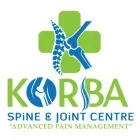Table of Contents
Why Movement Matters
Many people finish their workday feeling tightness and discomfort in the lower back, and it’s a very common experience. Low back pain is one of the most common health problems worldwide—research shows that nearly 80% of people will experience it at some point in life (NIH).
Sometimes it’s just a dull ache from sitting too long. Other times, it’s sharp, sudden pain after lifting something heavy. For many, it becomes a recurring problem that interferes with work, sleep, and daily activities.
While medications and rest may bring temporary relief, the real long-term solution is movement. Exercise of low back pain not only eases discomfort but also prevents future flare-ups by strengthening muscles, improving flexibility, and supporting spinal health. The key is knowing which exercises actually help—and which ones make things worse.
Understanding Low Back Pain
Common Causes
Low back pain can have many triggers, including:
- Muscle or ligament strain – lifting, twisting, or sudden awkward movements.
- Disc problems – herniated or bulging discs pressing on nerves.
- Poor posture – sitting slouched at a desk for hours.
- Arthritis and spinal stenosis – narrowing of spinal spaces.
- Sedentary lifestyle – weak muscles fail to support the spine.
Risk Factors
Certain factors increase your likelihood of developing pain:
- Excess body weight → adds pressure on the spine
- Smoking → reduces blood flow to spinal tissues
- Stress & anxiety → increase muscle tension
- Aging → natural wear and tear of joints
When Exercise May Not Help
If your pain is accompanied by numbness, leg weakness, or loss of bladder/bowel control, exercise alone is not enough. These are red flags—seek immediate medical advice (Mayo Clinic).
Why Exercise is Essential for Back Pain Relief
For years, bed rest was the standard advice for back pain. Today, research proves the opposite—staying active helps most people recover faster.
Physical Benefits
- Improves flexibility and spinal mobility
- Strengthens supporting muscles (core, hips, glutes)
- Increases circulation → speeds up healing
- Reduces stiffness from inactivity
Psychological Benefits
Chronic pain takes a mental toll. Exercise of low back pain helps by:
- Releasing endorphins (natural painkillers and mood boosters)
- Reducing anxiety and fear of movement
- Restoring confidence in everyday activities
👉 Balance is key: complete rest weakens muscles, while overdoing it may worsen symptoms. Gentle, consistent movement is the sweet spot.
Best Exercises of Low Back Pain Relief
1. Stretching Exercises for Flexibility
These reduce stiffness and ease tension:
- Knee-to-chest stretch – Lie on your back, pull one knee toward your chest, hold 20–30 seconds, switch sides.
- Child’s pose – Sit back on your heels, stretch arms forward, and lower your chest.
- Cat-cow stretch – Start on your hands and knees, then slowly arch your back upward and round it downward in a gentle flow.
2. Core Strengthening & Stability Exercises
Building core strength provides natural protection and stability for your back.
- Pelvic tilts – Lie on your back, tighten abs, and flatten your spine against the floor.
- Bridges – From the same position, lift hips up while keeping shoulders grounded.
- Bird-dog exercise – On all fours, extend opposite arm and leg, hold, then switch.
- Modified planks – Hold from knees if needed to reduce strain.
3. Low-Impact Aerobic Exercises
Cardio helps circulation and endurance without jarring the spine:
- Walking – Simple, free, and gentle.
- Swimming – Aquatic exercises help by reducing spinal stress while still allowing effective movement.
- Stationary cycling – Builds endurance and strengthens legs; use upright posture.
Exercises to Avoid with Low Back Pain
Not all exercises are safe. Some increase spinal stress:
- High-impact activities – running, jumping, aggressive aerobics.
- Heavy weightlifting – deadlifts, squats, overhead presses with poor form.
- Forward toe touches & sit-ups – can overstretch discs and muscles.
- Twisting with weights – golf swings, jerky movements risk disc injury.
The key rule is simple—never push through sharp pain during exercise.
How to Exercise Safely with Low Back Pain
- Warm up & cool down – prepare muscles before, relax after.
- Your body speaks: mild muscle ache is okay, but sudden sharp pain means stop.
- Progress slowly – increase intensity gradually.
- Focus on form – proper posture prevents injury.
- Start small – 15–20 minutes daily, 3–5 days/week.
Lifestyle Habits That Support Recovery
- Ergonomics matter—choose a chair with good lumbar support and keep your screen at eye level.
- Maintain a healthy weight—extra pounds increase stress on your spine.
- Sleep hygiene – choose a supportive mattress, avoid awkward sleeping positions.
- Stress management – yoga, meditation, or simple breathing exercises.
When to Seek Professional Help
If pain persists despite exercise, a physiotherapist can design a personalized program. Sometimes, therapy may include:
- Manual therapy
- Heat or cold therapy
- Guided core stabilization
- Injections (for severe, persistent cases)
FAQs on Exercise of Low Back Pain
1. What is the best exercise for immediate relief?
Knee-to-chest stretch and child’s pose often provide quick comfort.
2. Can I exercise during acute pain?
Yes, but stick to gentle movements like walking and stretching.
3. Is yoga good for low back pain?
Yes, gentle yoga improves flexibility and reduces stress—but avoid deep backbends and twists.
4. How often should I exercise if I have back pain?
Aim for 3–5 days a week, starting with 15–20 minutes per session.
5. Can exercise prevent future back pain?
Yes, strong core and flexible muscles reduce recurrence risk.
6. Are sit-ups safe for low back pain?
No, traditional sit-ups put pressure on discs. Safer alternatives are partial crunches or dead bug exercises.
7. Which cardio exercise is best for bad backs?
Swimming and walking are safest and most effective.
8. Can I go to the gym with back pain?
Yes, but avoid heavy lifting without guidance. Focus on controlled, low-impact exercises.
9. How long before I notice improvement?
Many people see results within 2–4 weeks of consistent exercise.
10. Should I stop exercising if it hurts?
Stop if you feel sharp or radiating pain. Mild soreness is okay.
11. Does posture matter as much as exercise?
Absolutely. Poor posture during work or sleep can undo exercise benefits.
12. Is cycling safe for low back pain?
Stationary or recumbent bikes are safe. Outdoor cycling may strain if you lean forward too much.
Conclusion: Motion is Medicine
The exercise of low back pain isn’t about doing more—it’s about doing the right kind. Gentle stretching, core strengthening, and safe aerobic activities restore function and protect your spine. At the same time, avoiding harmful workouts and improving lifestyle habits keeps pain from coming back.
If you’re unsure where to start, begin with 10–15 minutes of walking and stretching daily. Gradually build up, listen to your body, and consult a professional if pain lingers.
Remember: movement is medicine, but only when done wisely.
🔗 Trusted Resource: NIH – Low Back Pain Fact Sheet
Further Reading
- From Hip to Lower Back Pain? Why Your Pain Is Spreading and How to Stop It
- 5 Warning Signs Your Hip Pain Is Actually a Back Issue

Dr. Vivek Arora (BPT, MPT, FRCPT, MIAP) is a licensed physiotherapist with over 20 years of experience in spine and joint care. He specializes in evidence-based physiotherapy, patient education, and long-term recovery without surgery. Passionate about empowering patients through knowledge, Dr. Arora shares expert-backed health content for a global audience.
To know more about Dr. Vivek’s journey, click here.
